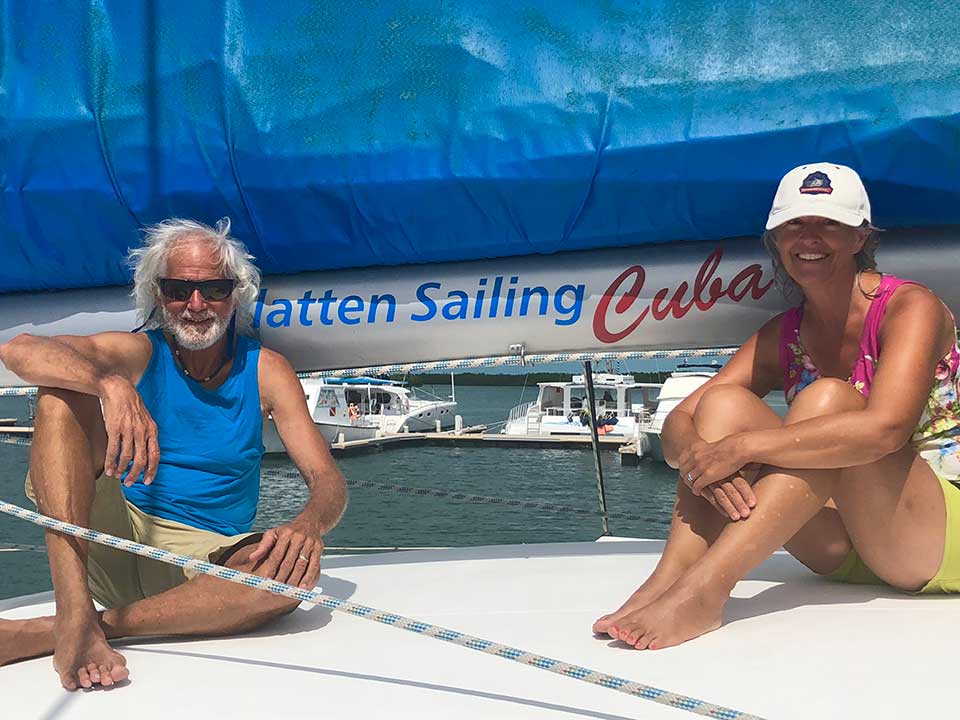
Sailing Cuba Part 2: A Normal Amount of Fun?
When we last left you (Viva Cuba Part 1: It’s Complicated!), we were at the Platten Sailing charter base (a German charter company) in Cienfuegos, Cuba… scratching our heads trying to figure out how to step the mast on our assigned catamaran, so we could get going with the sailing part of our Cuba adventure. After all, Sailing Cuba was the impetus for this whole trip! Our friend Teresa had signed on to captain one of three catamarans for a Cuba Sailing Charter with a group loosely based out of Poulsbo Yacht Club, WA. We had been invited to join her crew along with her husband Rob, and her friends Val and Kelly who we’d not met before.
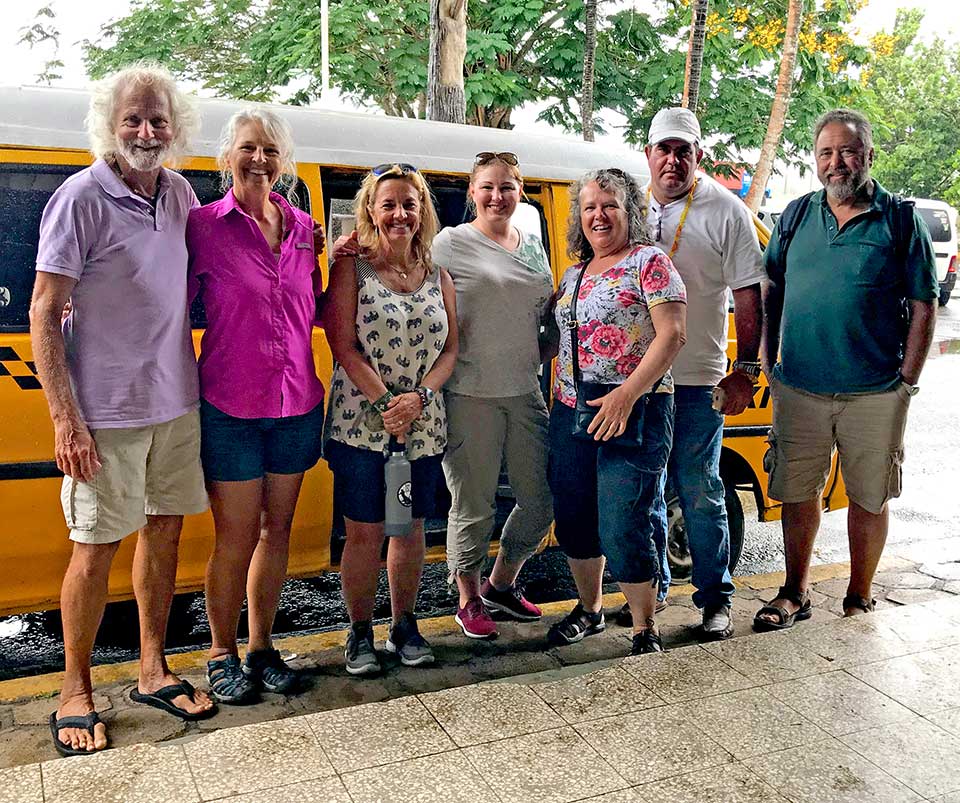
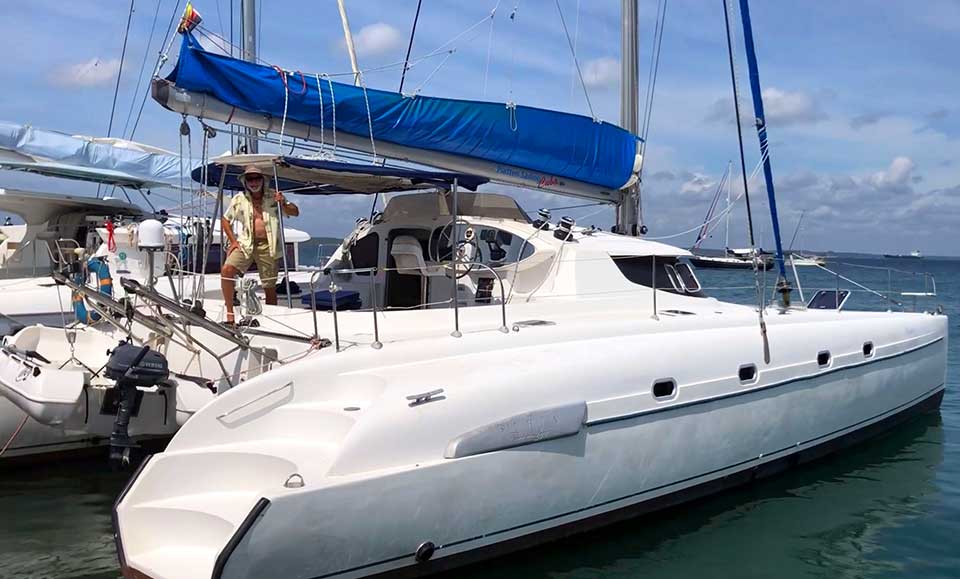
Luckily, once the charter staff returned from lunch they scurried about, getting us a different boat… so we didn’t have to step the mast after all. But Carlos, our replacement 46′ catamaran still had to be cleaned before we could board her…really? Pretty sure they knew we would be arriving today… so why the hurry and scurry to suddenly get the boat ready for us after we arrived? Just the normal amount of Cuba complication… Apparently the previous charterers on our original boat (see Part 1) had been a group of “drunk Russians” who’d sailed inebriated at night, across the reef, and taken out an entire green can channel buoy hooking it on the shroud of the boat, breaking the spreader, and dismasting. Oooops!
Chartering & Provisioning in Cuba
While we waited for Carlos to be cleaned, we checked on the provisions we’d pre-ordered from Platten. In late February we had all gotten together on a six-way Zoom web-conference from Mexico to CA to WA and talked about our meal planning for the upcoming week-long charter. Who could/couldn’t eat what, who was bringing what, and what was a “normal amount of eggs for six people to eat for six days?” Teresa tallied everything up in an Excel spreadsheet and sent it off to Platten two weeks prior to our arrival.
As we’d read and also learned the previous week in Havana, grocery stores are few and far between in Cuba. Knowing food could be hard to find, we had all brought a lot of things with us from home including ziplock bags, garbage bags, clothespins, sponges, canned salmon, almond butter, peanut butter, GF oatmeal, GF pancake mix, GF brownie mix, and GF pizza crust mix. Plus enough meal-replacement protein bars for everyone to have one or two a day, just in case! But the fresh foods we would have to provision from the charter base.
Having chartered with the Moorings and Sun Sail in the Caribbean before, we thought that provisioning from a charter base (especially a German one) would be pretty straight forward… After all, they’d sent us a list of what they had in stock, and we’d checked the box and indicated how many of each item we wanted. But guess what? It’s Cuba… it’s complicated.
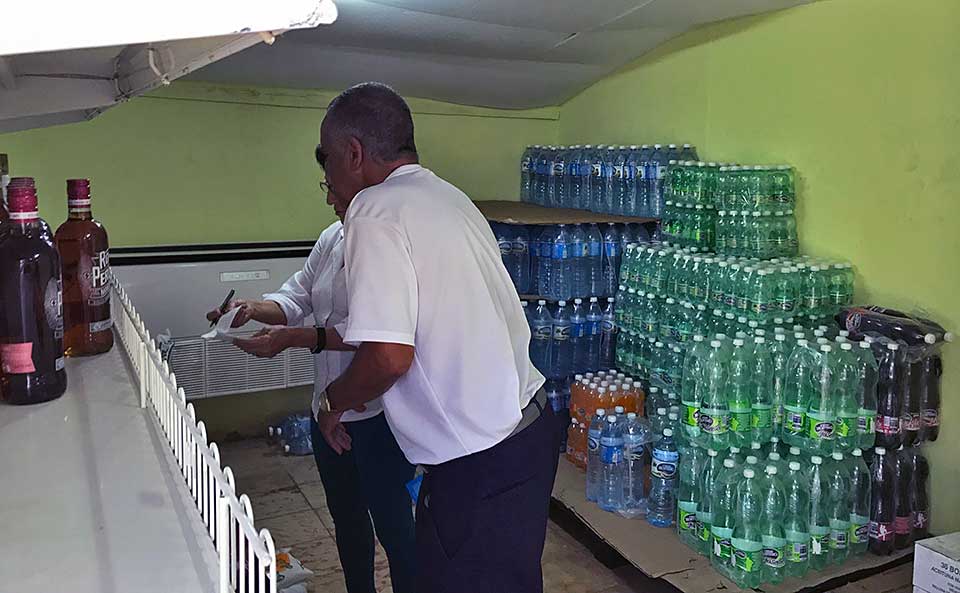
The tienda had LOTS of bottled water, lots of boxed fruit juices (with lots of sugar added), and about 7 different kinds of Cuban rum. “What’s the normal amount of rum for 6 people for 6 days? Let’s get one of each bottle and sample them!” Most of the items in the tienda were Pee Wee Herman-sized, like a 5-lb pound can of tomato sauce?? Thankfully Teresa had brought some “normal size” cans in her luggage. And 4lbs of butter!? We couldn’t convince them to sell us less than that so we opted for no butter rather than have it go to waste. We also bought 48 eggs (“a normal amount”!?), ham, and shrimp. But they had zero produce in the tienda. In fact, we had talked to a cruising family from Norway on the dock that afternoon, and they had just spent most of the day walking all Cienfuegos, only to return with 4 small bags of produce.
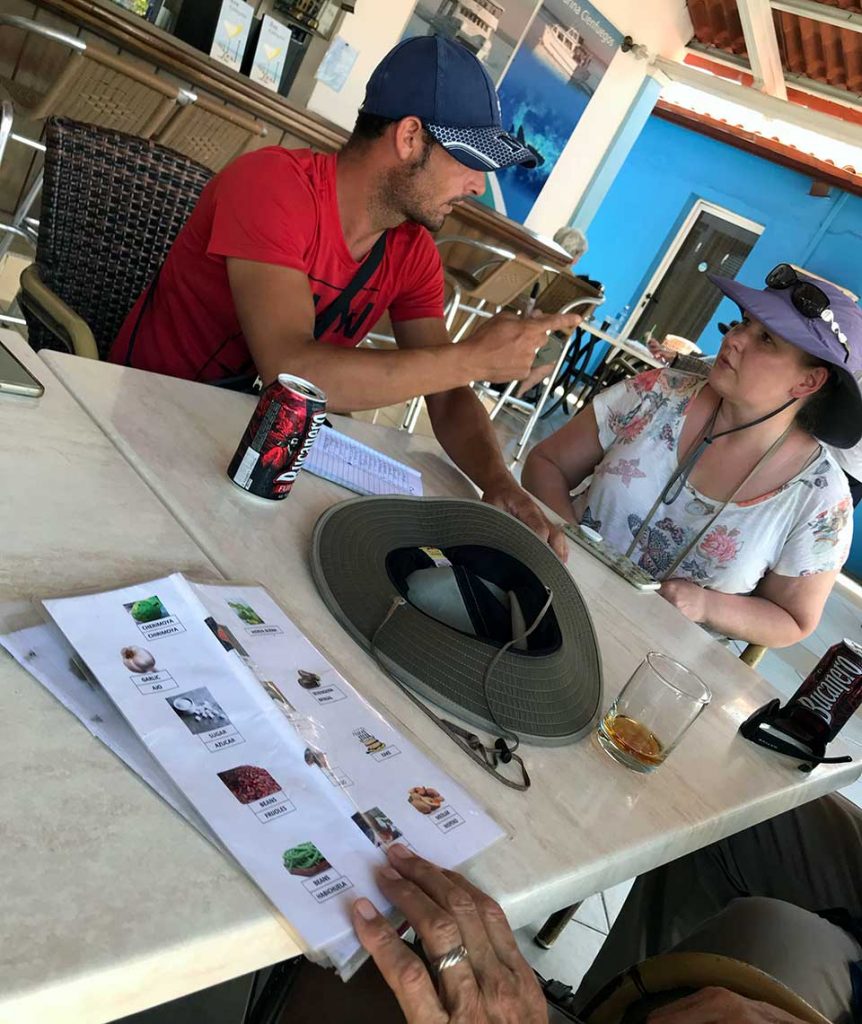
For fresh fruits and veg, we had to meet with José the “produce guy”, (a third-party vendor, not part of the charter biz at all as it turned out.) José showed us a laminated card with photos of all the types of produce he could potentially get us, coaching it with “not everything available.” With our list in hand, he took off on his bicycle to find what he could for us. He was also buying produce for the other two boats in our fleet. A few hours later he returned with onions, garlic, ginger, limes, cabbage, green tomatoes, cucumbers, a few really sad looking carrots, some bok choy, a small pineapple, mangos, cherimoya (way past their prime), some potatoes, and mint for our mojitos. Wahoo… we had fresh produce! Initially, the provisions looked like not enough for six people for six days. But in the end, we didn’t go hungry on this trip, and Bel and her friends were the recipients of everything that was leftover, including a “normal amount” of eggs!
Carlos was finally ready for us to board in the late afternoon and we stowed everything. For those of you not familiar with a catamaran, it has a large outdoor cockpit, large salon and galley upstairs, and then two amas (hulls) one on either side of the salon. Each ama had two double cabins with their own heads, plus a bench settee in the hallway between the cabins. The forward cabins also had doors into forward crew cabins in the “pointy end” of the bows. So total accommodations could sleep 14 in the beds alone, not counting the salon area or cockpit area. Since there were only six of us, Val and Kelly each had their own double cabins/heads, as did we, and Teresa & Rob. A comfortable LOT of room for six people, with loads of room to store everything.
With provisions stowed, the charter base manager, Omar, gave us a chart briefing and a safety tour of Carlos so we knew where to find everything in case of an emergency. Hopefully not another dismasting! Of all the boats we’ve ever chartered, this one took the cake for having the most spare parts onboard: spare water pumps, spare prop, spare alternator, spare shift cables, spare radiator belts, and a toolbox full of basic tools, including bolt cutters! It’s also the ONLY boat we’ve ever chartered that didn’t have battery issues! Omar glossed over the galley (kitchen) because most of us were sailors with our own boats, surely we could figure out how the galley worked. That night we ate dinner out in Cienfuegos at a fantastic restaurant called Grill Punta Gorda (some of the best food of our entire two-weeks in Cuba.)
Cruising the Canarreos Archipelago
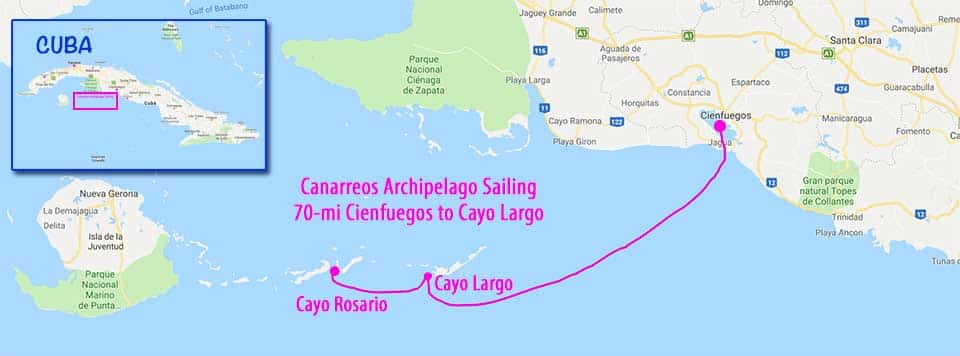
Our cruising grounds, the Canarreos Archipelago, were 70-miles offshore, (and for your non-boaters, sailboats only travel around 7-10 miles per hour.) These remote islands are a protected National Park and were reported to be some of the best coral reefs in the Caribbean, so we were excited to go check it out. It would be a long day’s passage to the first island, Cayo Largo, and we had to be anchored before dark. We used Nigel Calder’s Cuba: A Cruising Guide as our main source of navigation and information and found it very accurate.
We planned to leave the dock at 0500 and were up at 0430 to make ready. With three boats in our “fleet”, the game plan was to follow each other for the hour-long motor out of Bahia Cienfuegos in the early morning darkness. The other two boats had hired Platten’s professional captains to get them out to the islands. With the combined experience and cruising miles of our crew, we didn’t, and we hadn’t planned to buddy-boat or stay together after the initial passage.
O’dark-thirty the next morning, when Kirk, a.k.a. “Mr. Coffee”, tried to make coffee, we found out that there was NO fuego in Cienfuegos! (“Cienfuegos” translates to “100 fires” in Spanish, and is a common Spanish surname). The stove would not light, the electric ignition was no bueno, there were no matches onboard, and not being smokers, none of us had lighters either. We decided this was a deal-breaker and we could not leave the dock until we had a way to light the stove or we’d be SOL for a week out in the remote islands of Canarreos Archipelago not being able to cook!
So at 0500 Heidi was walking the docks asking the other boats “Tienes fuego? No tenemos fuego por cocinar!” (Do you have fire/flame? We don’t have any fire to cook!) Neither of the other boats in our group had a way to light the stoves either?! But one of them had brought their own lighter just in case. [Note to self: always bring your own flame when chartering!] Finally Heidi succeeded in getting an early-morning fisherman to part with his half-full, rusty-lighter after he lit his cigarette. We crossed our fingers and hoped we’d be able to find another lighter on Cayo Largo, as this one was pretty hard to light but better than nothing! Coffee made, and we were underway, motoring the hour across Bahia Cienfuegos in the pre-dawn darkness. Heidi had made “overnight oatmeal” the night before so once we had a flame we could actually cook breakfast that morning.
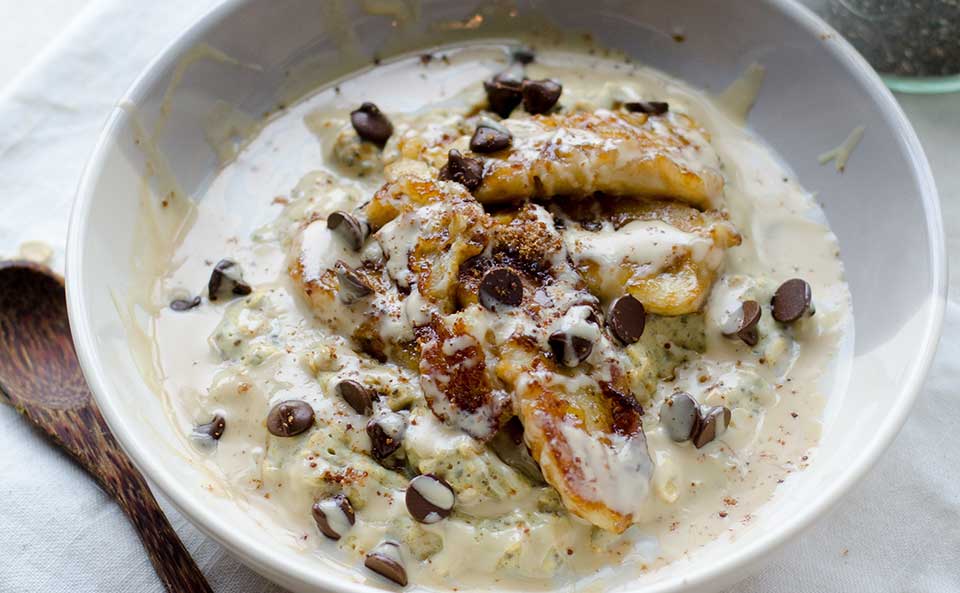
Overnight Oatmeal
This is a quick-n-easy, delicious, nutritious passage breakfast that we often eat aboard Due West.
Ingredients:
Bob’s Red Mill GF Rolled oats (or any other rolled oats, use amount indicated on package)
¼ cup Nuts (we like sliced almonds but you can use any nuts)
¼ cup Raisins
¼ cup Dried Coconut Flakes
1 TBSP chia seeds
½ tsp Cinnamon (or to taste)
Water (again use amount on package for how many cups you used)
Optional Toppings: ¼ cup each of organic berries, chocolate chips; chopped dried fruit, diced apples, or sliced bananas
Directions:
Put all ingredients in a pan (except toppings), and let soak overnight. Next morning heat it up and it’s ready to eat in about 10-15 minutes. Top with your fav toppings. YUMMM!!
It was a beautiful, uneventful day of sailing and motor-sailing in “blue-jello” water as Kelly coined it. Kelly had never been ocean sailing before and couldn’t get over the magnificent colors of the water. At one point when Heidi was driving (photo above), she noticed a large bird flying straight for the boat on the port side. She actually ducked, then realized it would have likely hit the mainsail, so it must have dodged behind us? Suddenly it flew right into the cockpit and landed next to Kelly, both looking very shocked… But apparently that was just its natural look! It didn’t stay long enough for anyone to grab their camera, but its face was very memorable.
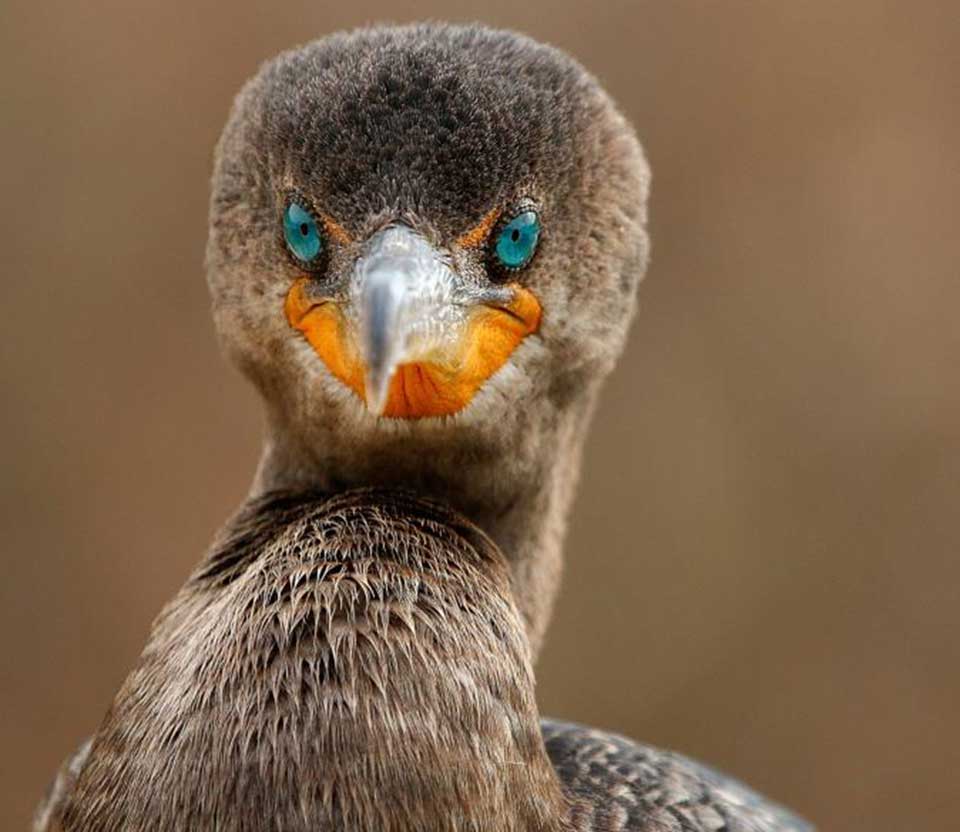
Cayo Largo
Ten hours later we were “hook down” (anchored) off la playa at Cayo Largo and ready to swim! Heidi was the first to dive in. So happy to be back in the Caribbean Sea again in spite of the sargassum, a type of seaweed-looking algae (and apparently edible) that has been plaguing Caribbean beaches for the last few years. That night we were massively attacked by mosquitos and our cabin looked like a blood bath… thankfully the breeze picked up in the night and blew the rest away.
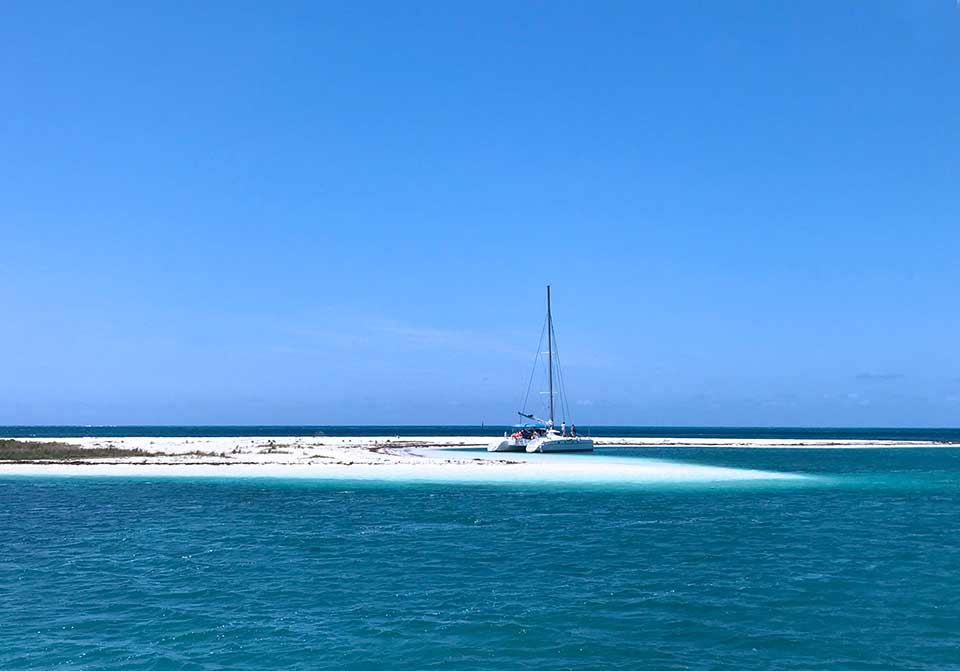
Next morning we decided to dinghy into the dock at Cayo Largo to look for another lighter! Cayo Largo is one of only two inhabited islands of the Canarreos Archipelago and has its own airfield, and lots of all-inclusive hotels and resorts, plus a small marina and tiny “government town” with a bank, small store, turtle sanctuary, museum, and tropical restaurant/bar. We had originally not planned to go ashore here but as early cavemen can attest, finding fire was vitally important!
Back at the charter base, Omar had assured us the dinghy fuel tank was full, and since the tank was not easily visible, no one had bothered to confirm that factoid. Six of us piled into the plastic sport-yack-type dinghy and motored up the channel a good half-mile to the marina. Of course about half-way there the motor died… and we determined it was out of fuel. So the question was: should we row on in the direction we were headed and get gas at Marina Cayo Largo? Or row back to the boat and refill there? There was a crosswind making either destination difficult to reach by rowing. (See: Cuba Conga Rowing Style! video)
Teresa and Val were sitting in the middle and initially started rowing… but you know by now that Cuba is complicated… turns out we had two different oars, that were two different lengths, which sort of made us spin in a circle! After rowing against the wind to try and reach the dinghy dock, Kirk’s wishes prevailed and we decided to head for the boat instead. Rob spelled Teresa and Val at the oars but the side wind hindered his efforts too. Thankfully after watching us for a while, the snorkel-boat “Safari” took pity on us, threw us a line, and towed us back to Carlos.
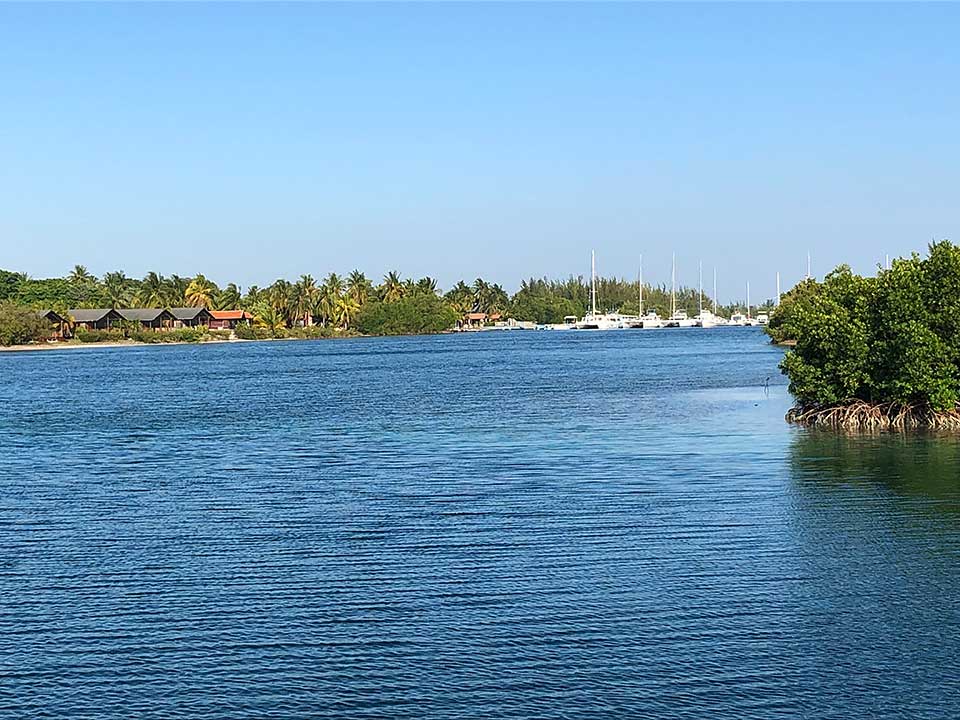
As the guys went to refuel the outboard tank (cuz that’s a blue job!) they discovered there was no pour spout in the gas can, and there was no funnel aboard. So how best to refill the TINY outboard tank without spilling fuel in the bobbing seas? We finally cut the top off of a water bottle and used it as a funnel which mostly worked, except that you couldn’t see when the tank was full until it overflowed. No bueno! Back in the dinghy this time we made it to the dock just fine. We found the store, and YAY! they had a lighter! Then it was time for a very late, fly-infested lunch at the only public restaurant-bar on the island, “Taberna El Pirata”.
After lunch, we took a walk little walk around the tiny “town”, which consists mostly of housing for the employees at the islands many all-inclusive resorts. They work for 20-days then take a ferryboat home for 10-days, rinse and repeat. Most of them live on the larger island to the west, Isla de Juventud, or in Cienfuegos. That was also interesting to learn since in general Cubans aren’t allowed on boats.
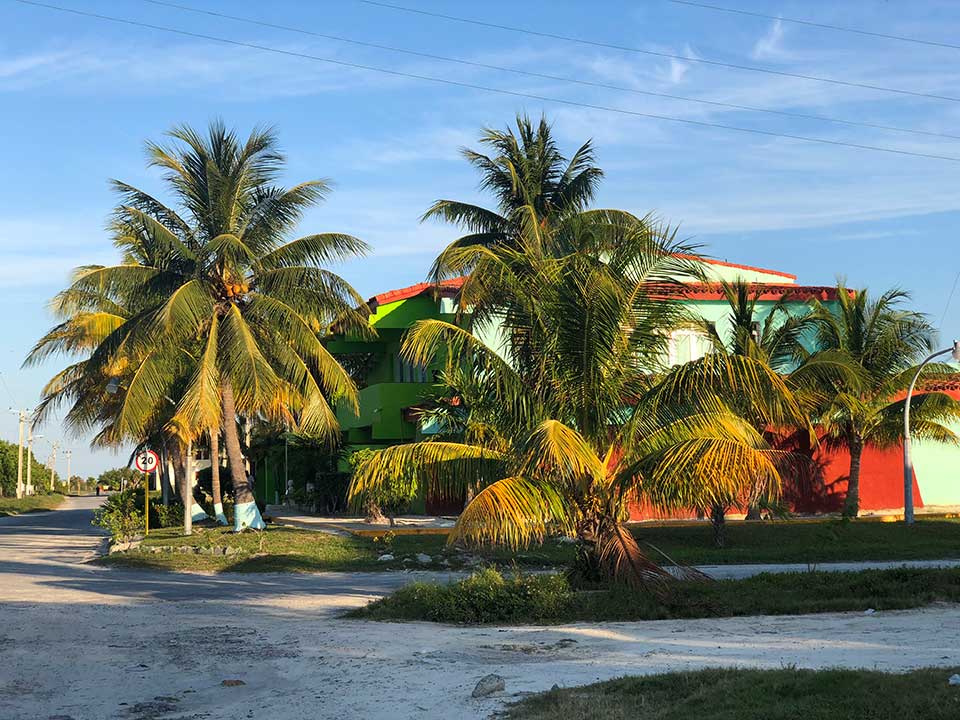
We then visited the sea turtle sanctuary, which was fun to see, having visited sea turtle sanctuaries in Bequia, West Indies (by far the biggest/best operation we’ve seen), and in Mexico as well. The sea turtles in Cuba are mostly loggerhead sea turtles with some green sea turtles too. Unlike in Mexico where the eggs are considered a delicacy and the nests need to be protected from poachers, in Cuba they don’t eat the eggs, instead, they go for the adult turtle meat. So sea turtles are also endangered in Cuba.
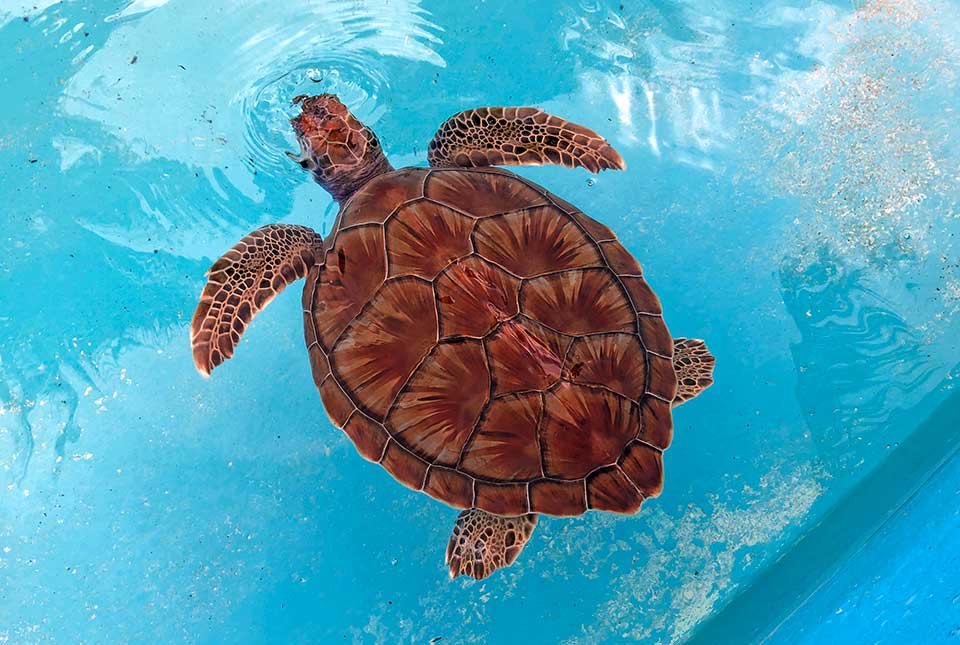
Like everything else in Cuba, the sanctuary at Cayo Largo is owned by the government. The man who takes care of the sea turtles at the sanctuary combs the beaches on Cayo Largo every day, from May through September, looking for turtle tracks and freshly laid nests. When he finds a nest he digs it up and brings the eggs to the sanctuary to incubate and hatch. Once they are hatched he releases them back from the beach where they were originally laid.
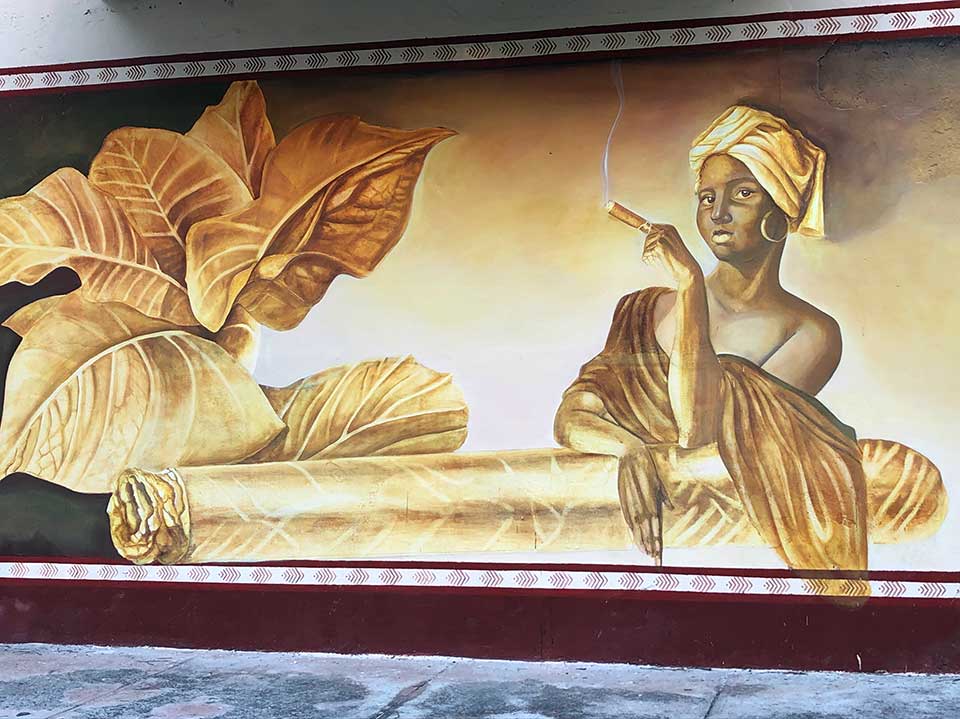
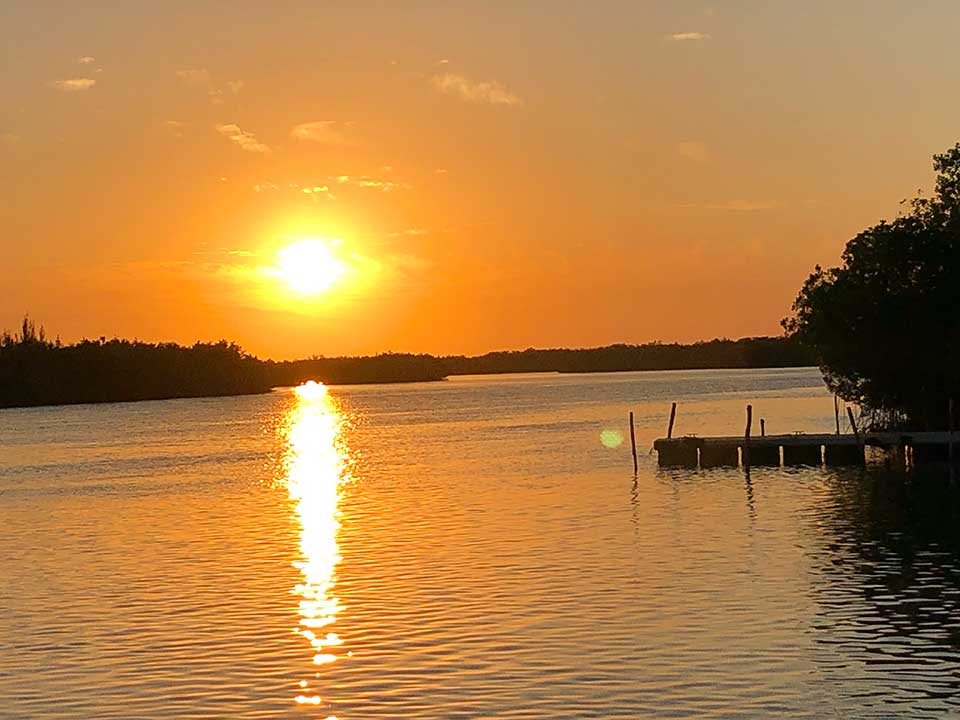
Cayo Rosario
Next day we headed on to Cayo Rosario, a 4 hours sail downwind, in 12-18kts and somewhat lumpy seas. We knew with the forecasted winds we might have a rough return to weather in a few days, but hoped for the best. Rob had brought his fishing gear and had two hand-lines trailing behind us. Port side caught a small Mahi which quickly got away. Then starboard side had a fish-on… and as Rob brought it in we realized we’d have fresh Barracuda for dinner!
We anchored in a sandy patch… and had the whole Cayo Rosario to ourselves. Another great swim/snorkel and swim-step shower and it was sundowner time. While we were debating whether to cook the Barracuda for dinner that night or save it until tomorrow (because no one was very hungry after our very late post-sail lunch)… a panga showed up with three lobster fishermen, and 9″ lobster tails for $5CUC each! We bought three. But no one was hungry, so we saved the barracuda and lobster tails for a feast for mañana!
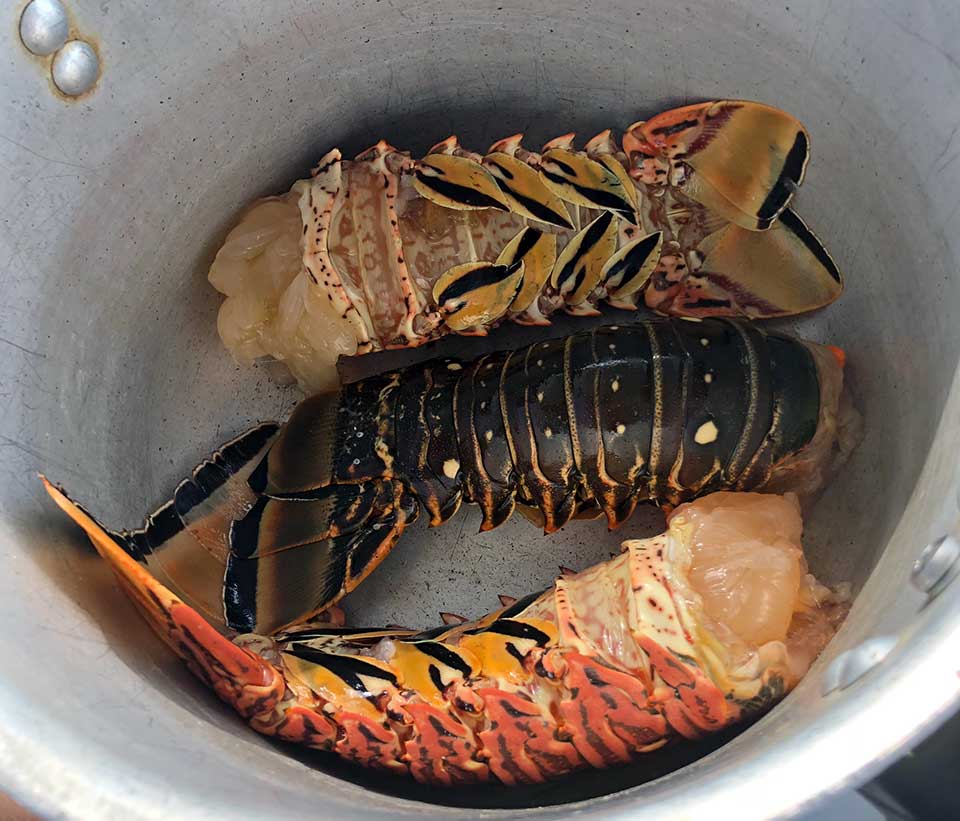
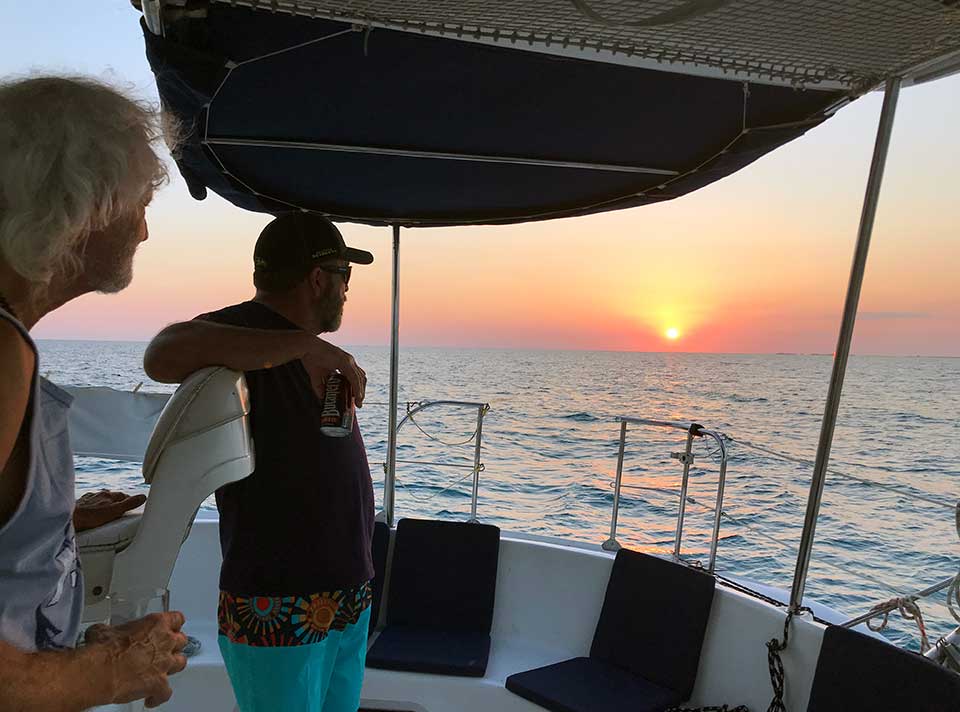
Snorkeling at the reef was on tap for the next day, but it was still blowing 15-20 kts, with choppy seas. So we motored to another part of the island behind the reef, that seemed more protected for snorkeling. Heidi had tweaked her back (maybe when we got towed in the dinghy by the snorkel boat, maybe sleeping on the oh-so-comfortable boat beds… not), and decided to stay behind with Kelly who was new to snorkeling. Kirk, Val, Teresa, and Rob took off on the dinghy to check out the fabled Canarreos Archipelago reef. They returned after about an hour with an underwhelming report. It’s likely that hurricane Maria had done some damage to this reef two years ago, and that combined with the surge and swell from the wind made for no fish, and no bueno snorkeling.
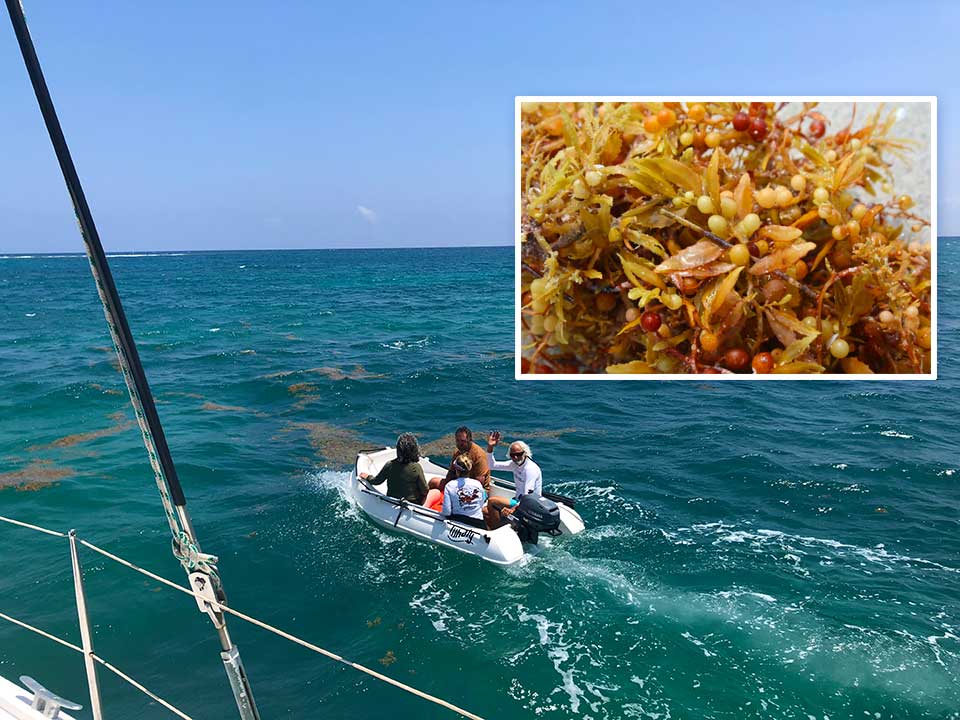
The snorkel anchorage wasn’t a good overnight anchorage, so we headed back to re-anchor in the same sandy area as the night before. Val snorkeled above the anchor and reported there were a few coral heads nearby, but we seemed to be hooked OK in 20′ of water. As we started prepping the Barracuda and Lobster tails for dinner, our friendly lobster fishermen returned to see if we wanted more lobster that night, sadly for them we didn’t need anymore. The lobster tails and Barracuda (fixed three different ways by Teresa) were all delicious!
Anchoring 101
Next morning we planned to hoist anchor and sail the 4+ hours back to Cayo Largo. It would be a “normal amount” of pounding in the 15-20kt headwinds, but it was already time to start heading back as we had to return the boat in Cienfuegos, 100 miles away, in two days. By 0900 we were ready to go and started hoisting the anchor. The whole anchoring/hoisting process itself had been a boondoggle on this trip, as the notorious Chinese chain was the wrong size for the windlass and kept jumping out! It’s complicated… Kelly gets the bravery award for keeping her foot on it (in tennis shoes), to help stop it from jumping. While the Rocna anchor had held well at each anchorage, this particular morning it seemed to be holding TOO well. We couldn’t hoist it.
Kirk volunteered to hop in the water with snorkel and mask to take a look. Seas were 12-15″, the wind was blowing 15-20kts, and a big catamaran like this has a lot of windage which creates a lot of pressure on the anchor chain. Not a great situation to have a swimmer in the water. But someone had to see what was going on. Kirk’s first report was that the chain was wrapped around a coral head, the anchor sitting a few feet away in the sand, not pulling its weight. No bueno!
With Kirk back aboard, we tried several tactics to maneuver the boat this way and that, to free the chain from the coral head. No go. Kirk went back in the water two more times to look from above, (each time a swimmer was in the water, we turned off the engines) but with the chop of the waves, it was hard to get a good read on the situation, So Rob, an experienced free diver, took the plunge. He was just able to dive down 20′ to the bottom but didn’t have enough air to free anything up. Plus there was too much pressure on the chain to move it.
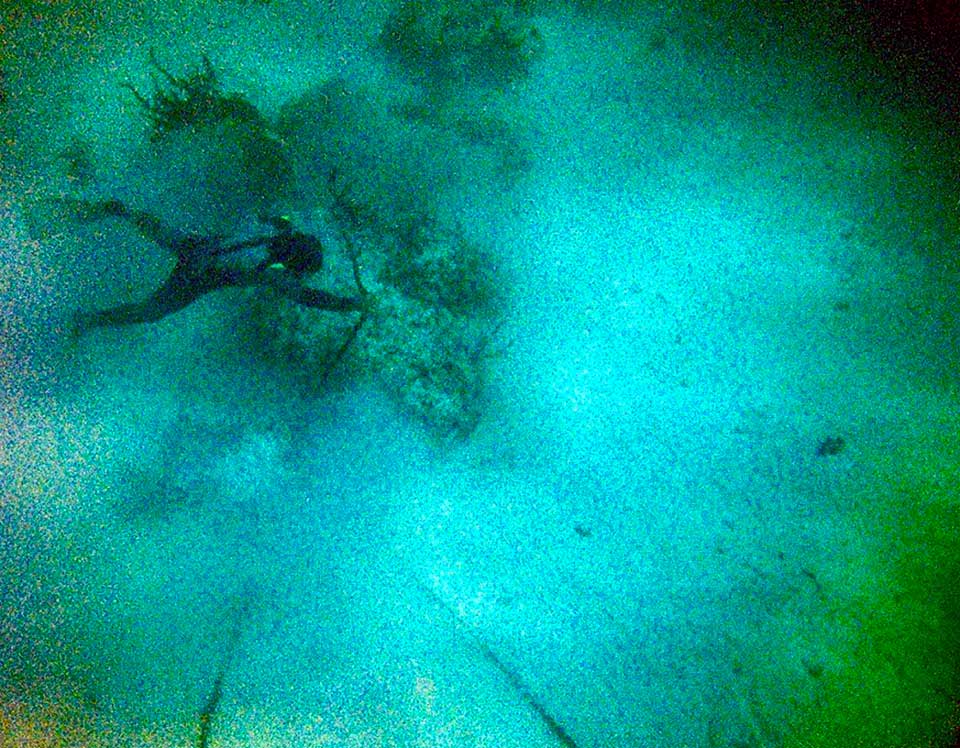
We all put our heads together and tried to think of a solution that didn’t involve leaving the Rocna anchor behind. There was a spare anchor we could have tried to kedge with, but the spare anchor didn’t have any rode. Hum… we tried everything we could think of. We even tried the bolt cutters, thinking we could cut the chain and attach it to the spare anchor, then re-anchor, then go fetch the Rocna using the dinghy. But the bolt cutters were so rusty they wouldn’t open. We even scanned the horizon for our friendly lobster fishermen, and while we could see their fishing camp in the binoculars, it was too far away to dinghy over and we didn’t see them or their boat anywhere.
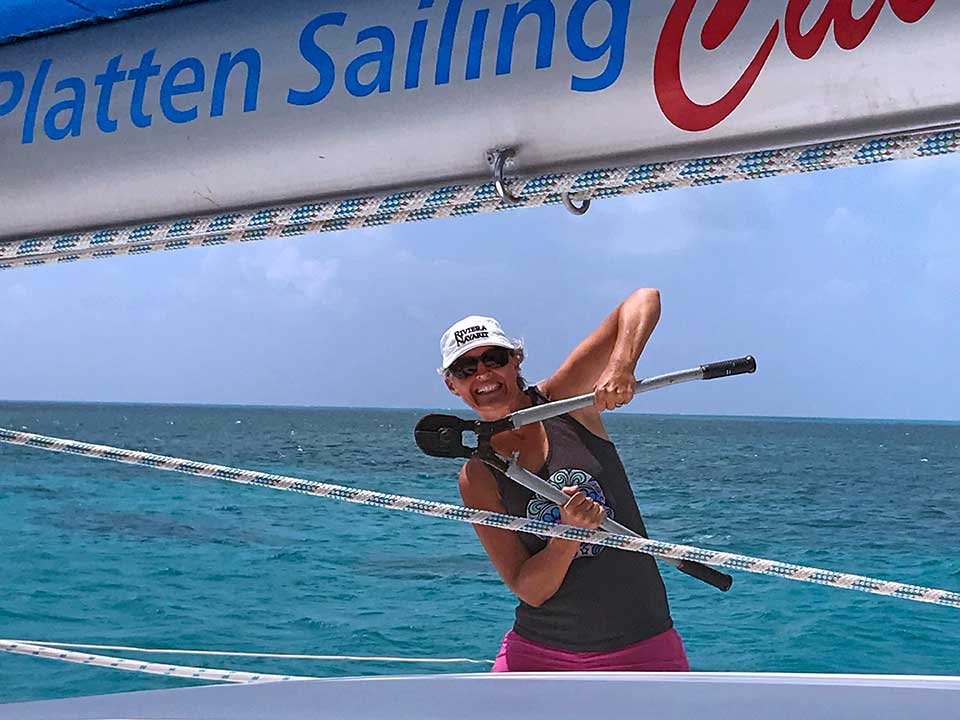
Safety first… with the wind building and the hours ticking by, we all decided it wasn’t safe to do anything except leave the anchor behind and let the charter company know the lat/long coordinates to retrieve it later. So we tied one of the large fenders to the chain, then cut the line that secured the chain to the boat… we didn’t have to cut much, the knife hardly touched it and it disintegrated! It was a harsh reality that we had almost 100 miles to sail back, and no operable anchor if we’d needed one.
Sidebar: As cruisers, the thought of leaving an anchor behind is really unthinkable! Had it been our own boat, we would have used a spare anchor/rode to take the weight off the original one, or worst-case, waited a few days for the winds to calm, and the lobster fishermen to return, and paid them to fetch the anchor. But as a charter boat with a return date and no way to reach the base via VHF, we did the next best thing…
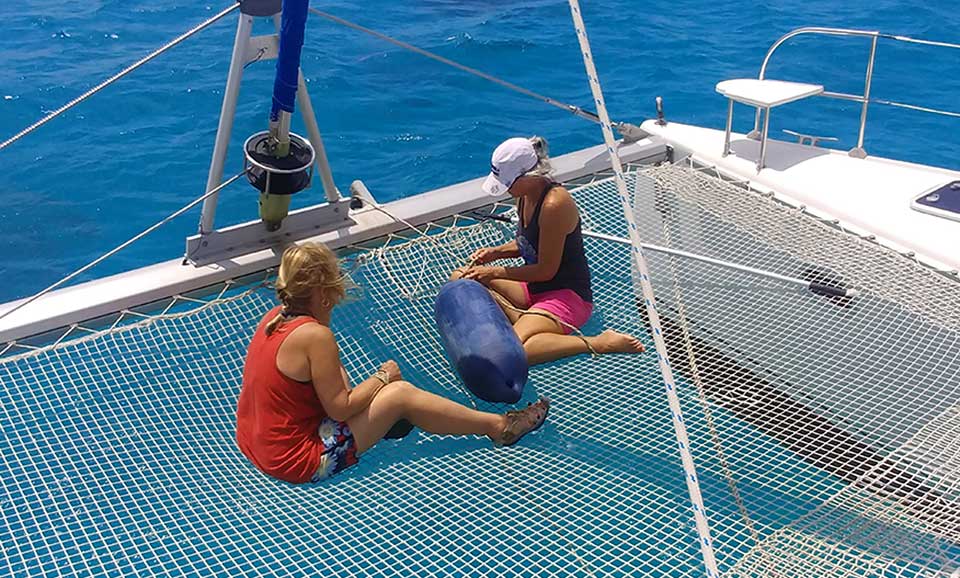
As all this was going on, one of the other boats in our fleet, Tropicana, appeared in the bay and started to anchor near us. We waved them off with the international distress signal, and then hailed them on the VHF, explaining the situation, and that they should not attempt to anchor here! We also asked that IF the lobster fishermen returned that night, to please offer to pay them to retrieve the anchor and bring it back with them in a few days. The other two boats were staying out longer than us, not touring inland Cuba after their charter ended.
Return to Cayo Largo
So off we headed motoring past the reef, then hoisting the main as a steadying sail to motor-sail back to the Marina Cayo Largo. As the weather report predicted, the trip back was fairly rough in big seas. Somehow Kirk managed to take a nap down below and not even notice he was being levitated off the bed with every pounding wave. His sea legs are definitely back!
We did have two cool animal sightings on this return voyage, one was a giant loggerhead sea turtle, the other a tiny dolphin that we have yet to ID. We originally thought it was a juvenile, but early the next morning Teresa and Val saw a pod of them, all small… so we’re not sure.
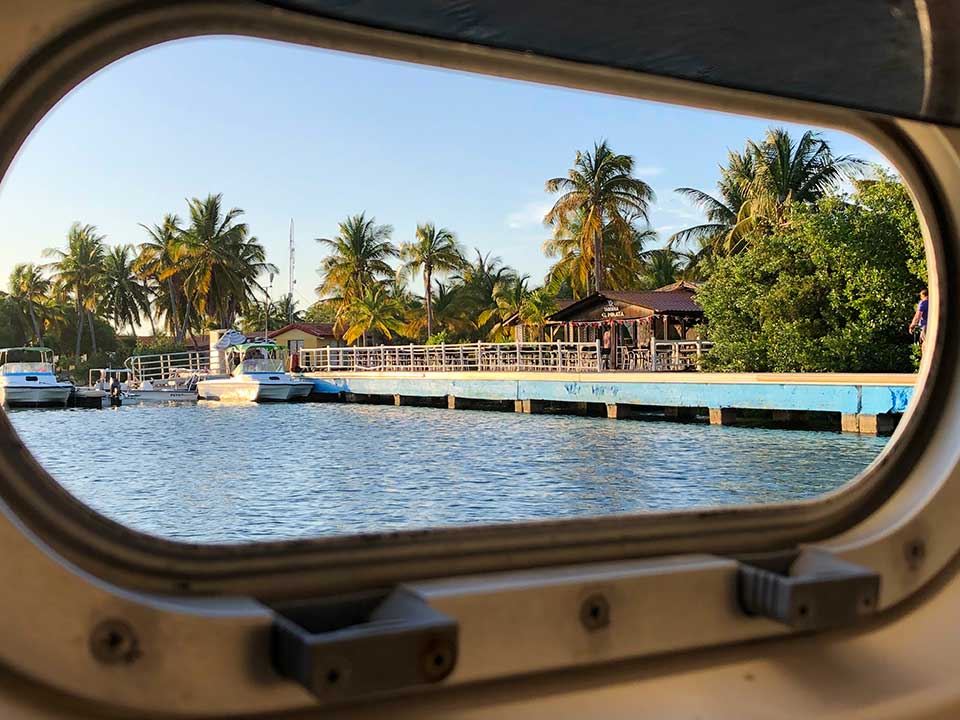
We returned to the Marina at Cayo Largo where Capitana Teresa did an excellent job parallel parking this behemoth catamaran between two other boats, aided by her crack deck crew. Shoutout to Val, the only one of us to throw her big, heavy dock line cleanly to the dockmaster! Immigration had to come to check us in (cuz that’s the way it works in Cuba, you check in and out of every port.) And when the Immigration officer boarded the boat, the first thing he asked us was: “Are you Democrats or Republicans?” Luckily we had the “right” (left) answer! They LOVE the Obamas, and are NOT big fans of #45 in Cuba! It was a quick, friendly check-in from there.
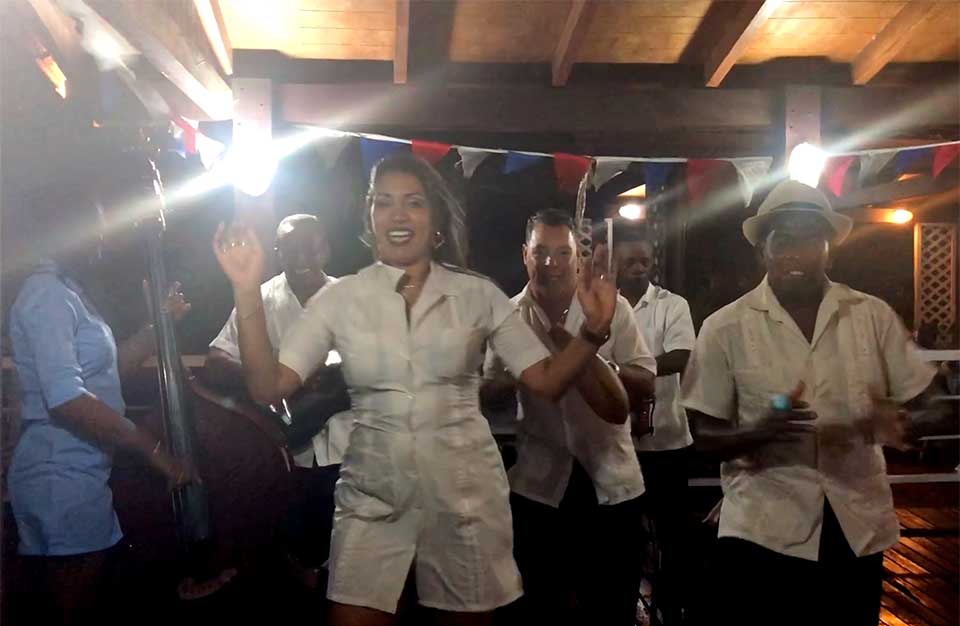
Dinner back at Taberna El Pirata (the only public restaurant in town!) where the “Mahi” on the menu was definitely NOT Mahi?? And this time instead of slapping away flies as we had at lunch, we were slapping an UN-normal amount of mosquitos left and right. There was a fun Cuban band playing on the deck, and they too were slapping and dancing, and slapping and playing. We quickly took cover back on board Carlos. (See Short video of this band.)
Wahoo!! The next day we got word that the lobster fishermen had in fact returned to Cayo Rosario, and had retrieved our anchor for Tropicana to bring back to the charter base. They reported that it had been figure-eight wrapped THREE times around two coral heads. Yikes! The fee of $60 CUC, a cost of $10 for each of us, was well worth having them fetch it and getting our deposit returned to us, and them making bank. Big thanks to Tropicana’s crew and the lobster fishermen too!
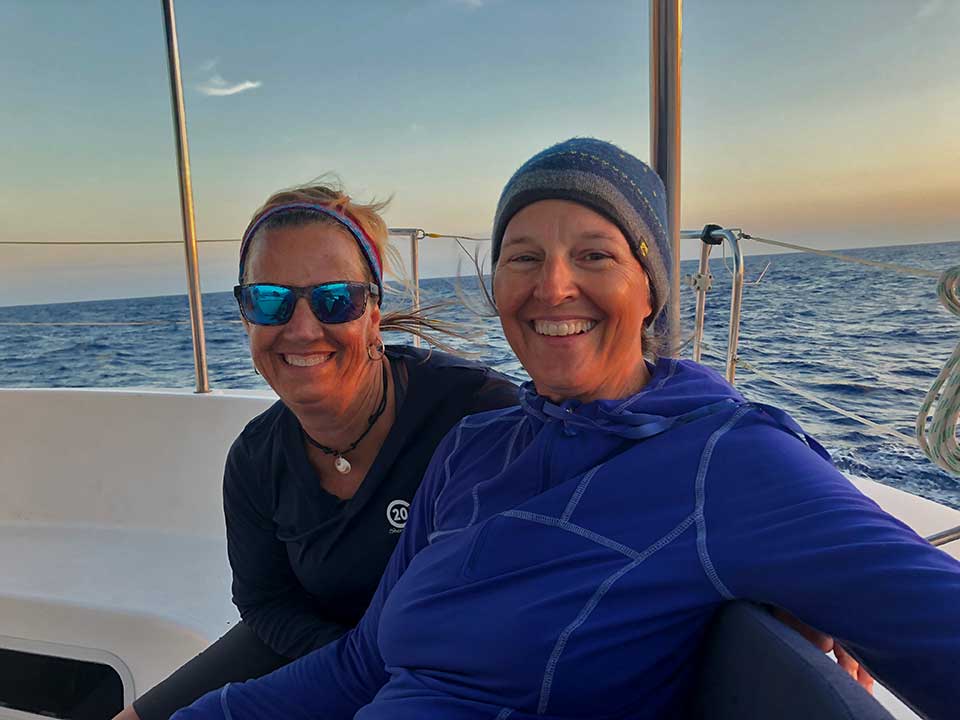
Overnight Passage to Cienfuegos
We prepped the boat for our night passage back to Cienfuegos with cushy watches of two-hours on, four-hours off. (We took the 2000 to 2200 and 0200 to 0400 shifts.) Night watches are Heidi’s favorite and these were the first we had done in over two years. With so many stars out, and no light pollution from Cuba, it was like being in the middle of the ocean. And a very rare treat: the Southern Cross, Big Dipper, and North Star were all visible at once.
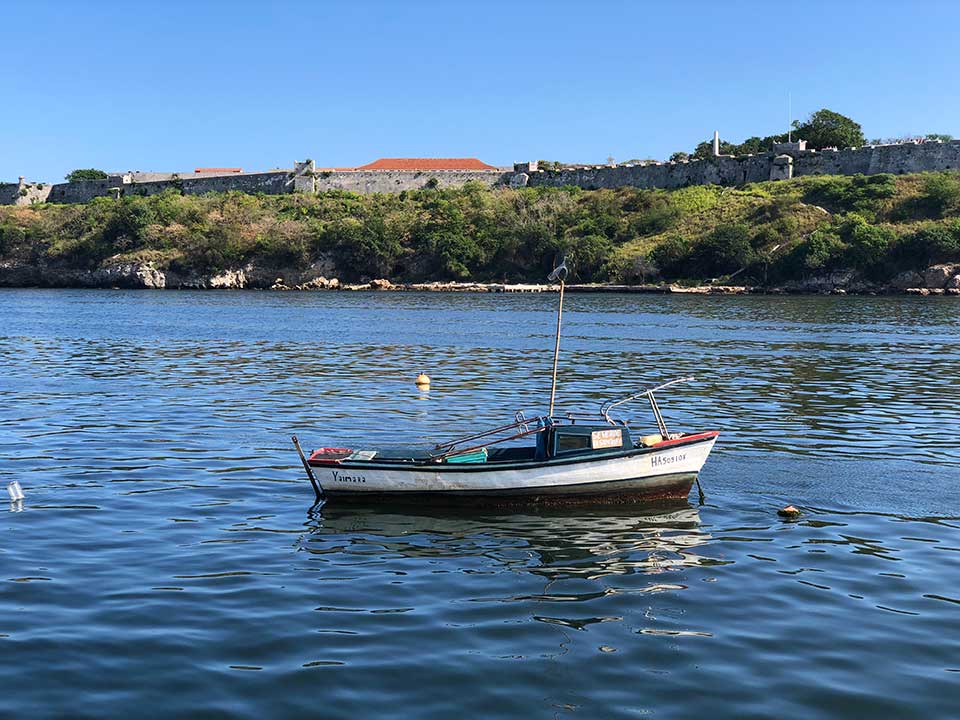
By 0700 it was just getting light as we entered the channel into Bahia Cienfuegos through a maze of “the normal amount” of tiny fishing boats. Then it was an hour motor across the Bay to the charter base, where Teresa did another excellent job backing the 46′ x 24′ behemoth Carlos into the slip! Omar checked us in and confirmed that we had done the right thing to leave the anchor behind to be fetched by the lobster fishermen and returned by Tropicana’s crew.
We did point out to Omar that there was no spare rode for the spare anchor. And he quickly replied that we could have used a halyard as a spare anchor rode. Of course, we had thought of that, however, by the looks of those old halyards, it might not have ended pretty. But he assured us we would get our deposit back, and took note of the many other missing and broken items that we reported to him. (Not things we broke–other than one winch handle that went swimming, ooops!– but things that were no bueno to begin with, like no fuego!) Carlos got us back safely, but this charter boat has surely seen better days, and needs a major refit or to be retired soon.
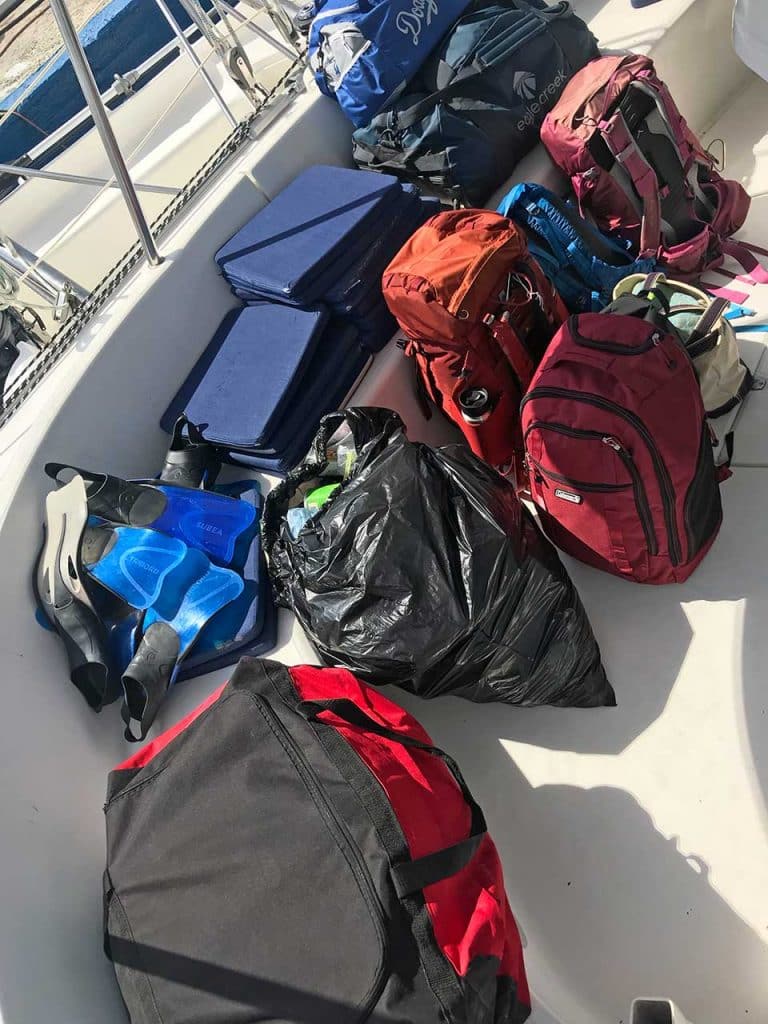
All in all, sailing Cuba was more than the normal amount of FUN! The six of us all got along so well, and sailed together and helped each other in many different ways. We can’t thank Teresa and Rob enough for inviting us along. And so good to make new friends, Val and Kelly!
We had pre-arranged for Bel with taxi-driver Gustavo and van to meet us at the marina when we returned. And we were excited for our continued land adventures in Cuba… As much as this trip started out being about “Sailing Cuba”, we all realized there was much more of Cuba to be seen…
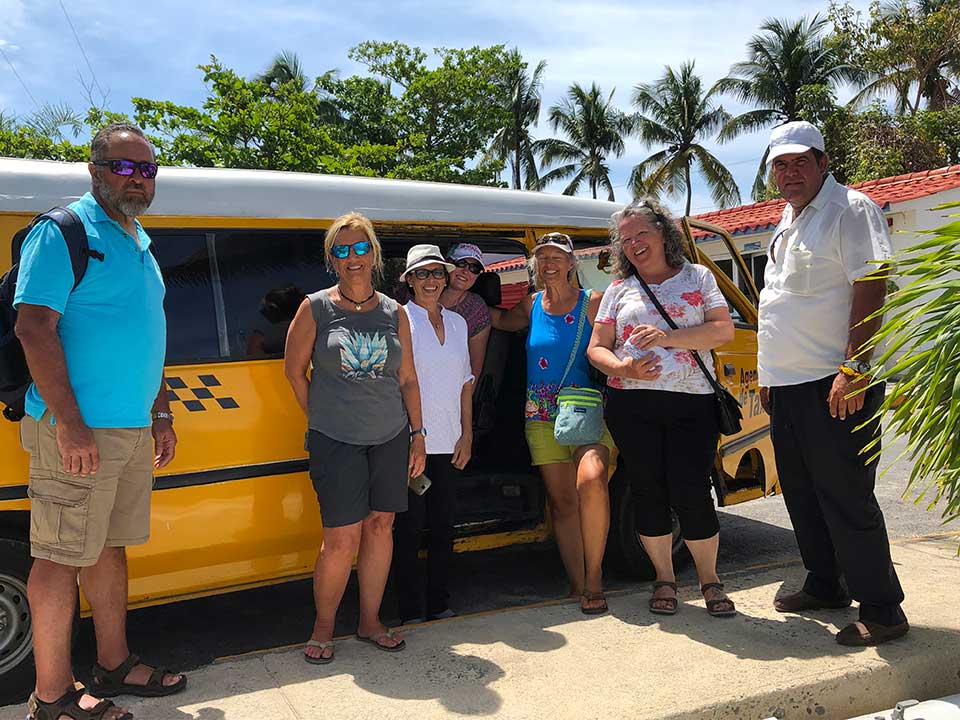
So where did we visit next? Who rode a water buffalo? Who rode a mule and smoked cigars? Who plowed a tobacco field with oxen? Who’s PFD (personal flotation device) prematurely inflated in their luggage? And who played maracas in a Cuban band?
Read Cuba-Conga! Part 3: Cienfuegos, Trinidad, y Viñales with links to our travel resources. Hint: The third leg of our adventures was a VERY special part of our trip. And if you missed it: Viva Cuba Part 1: It’s Complicated!).

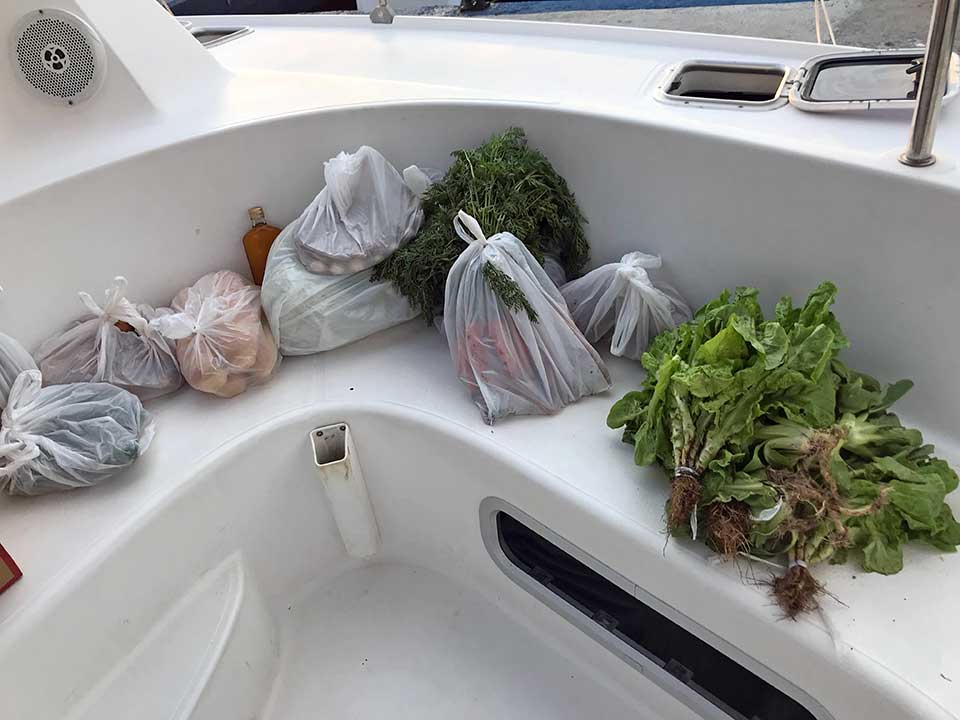
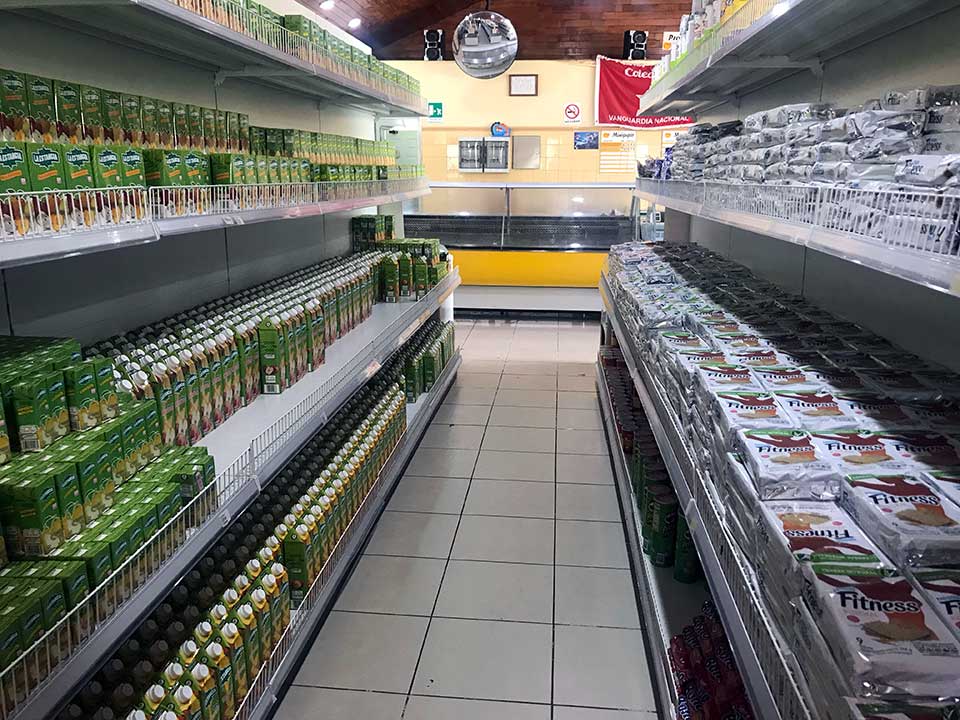
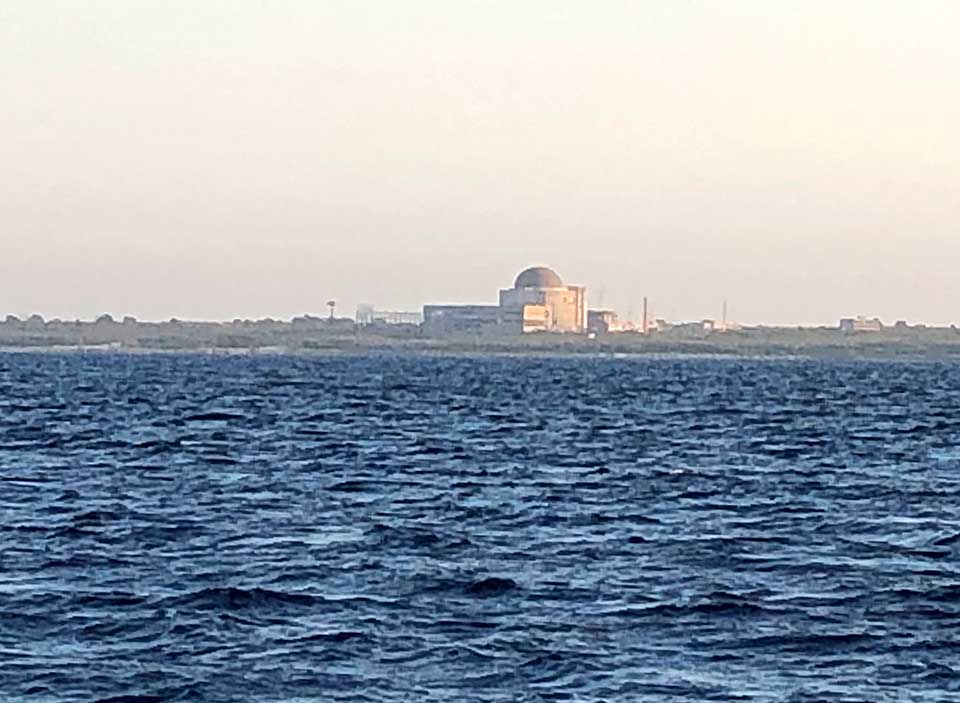
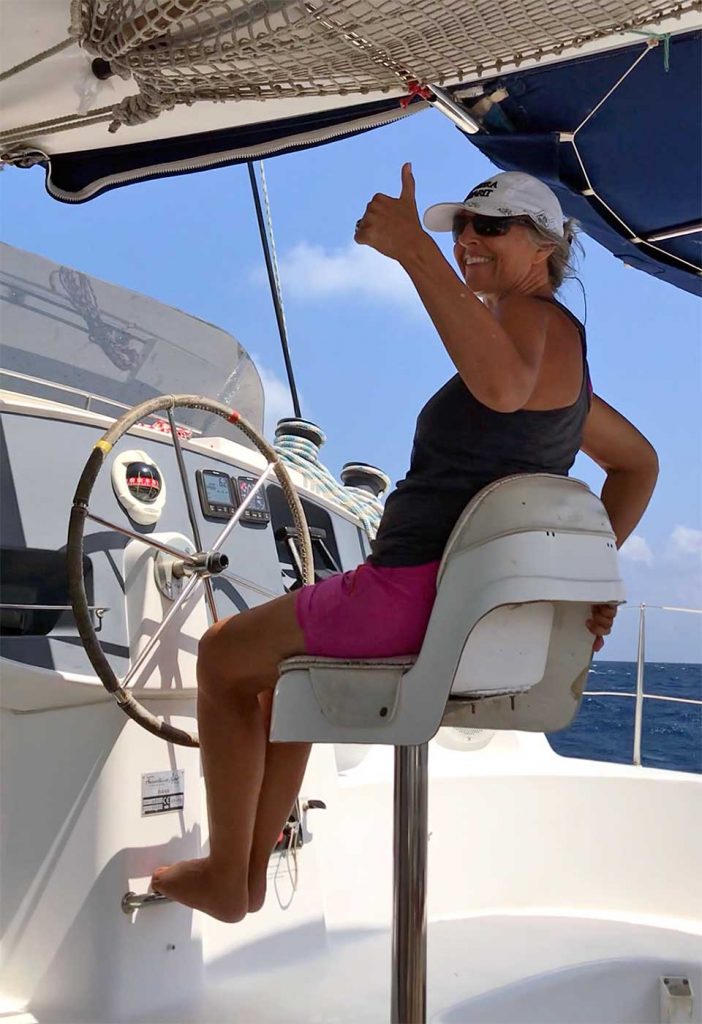
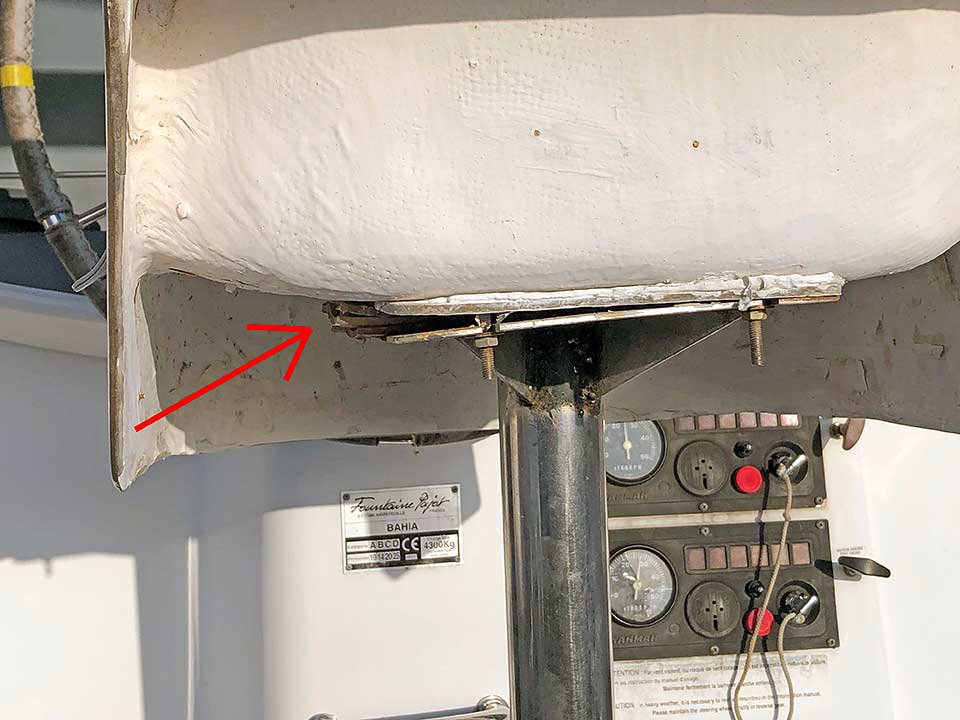
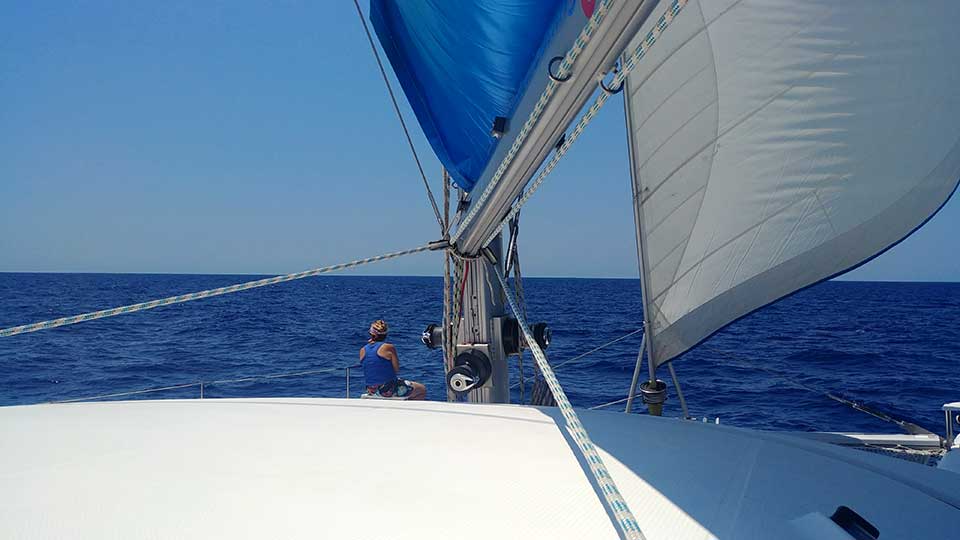
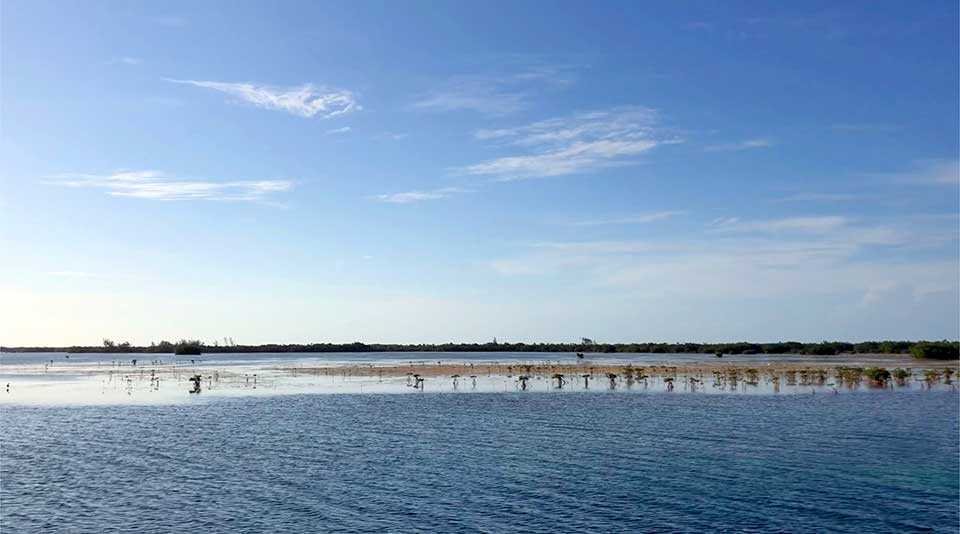
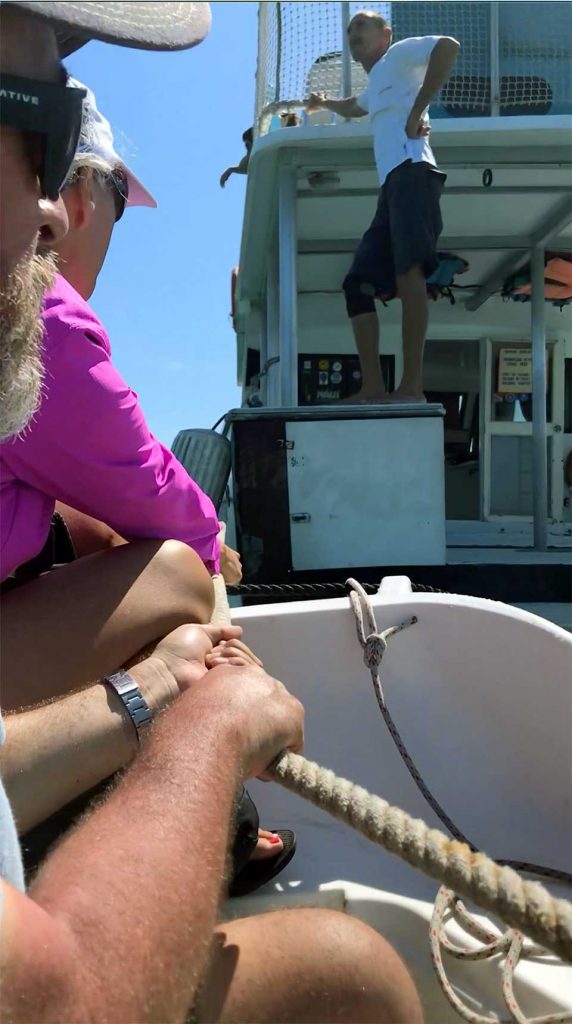
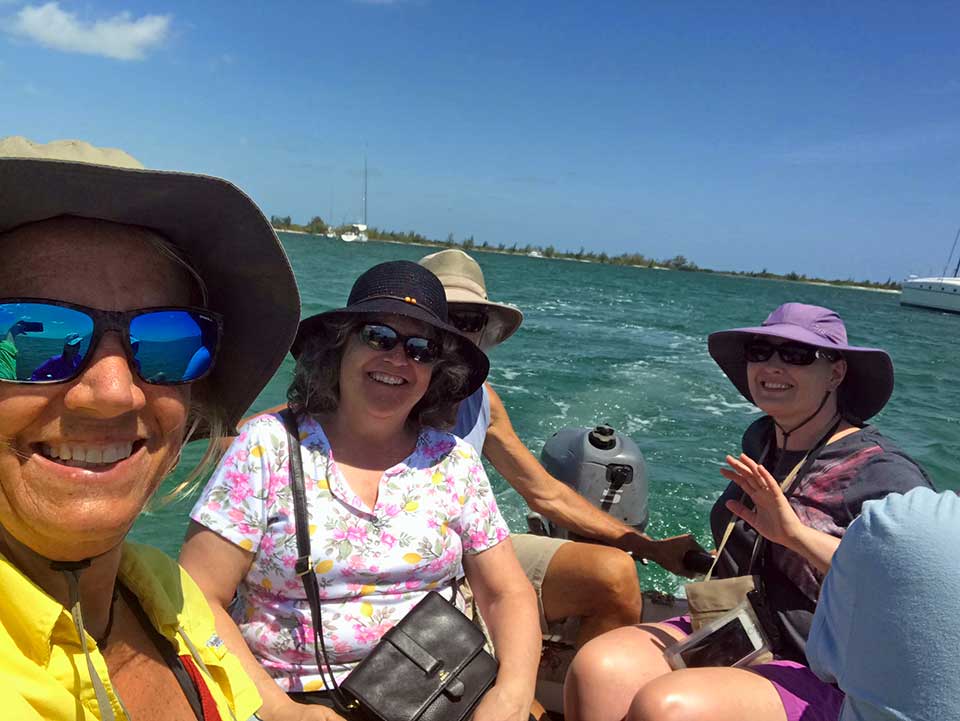
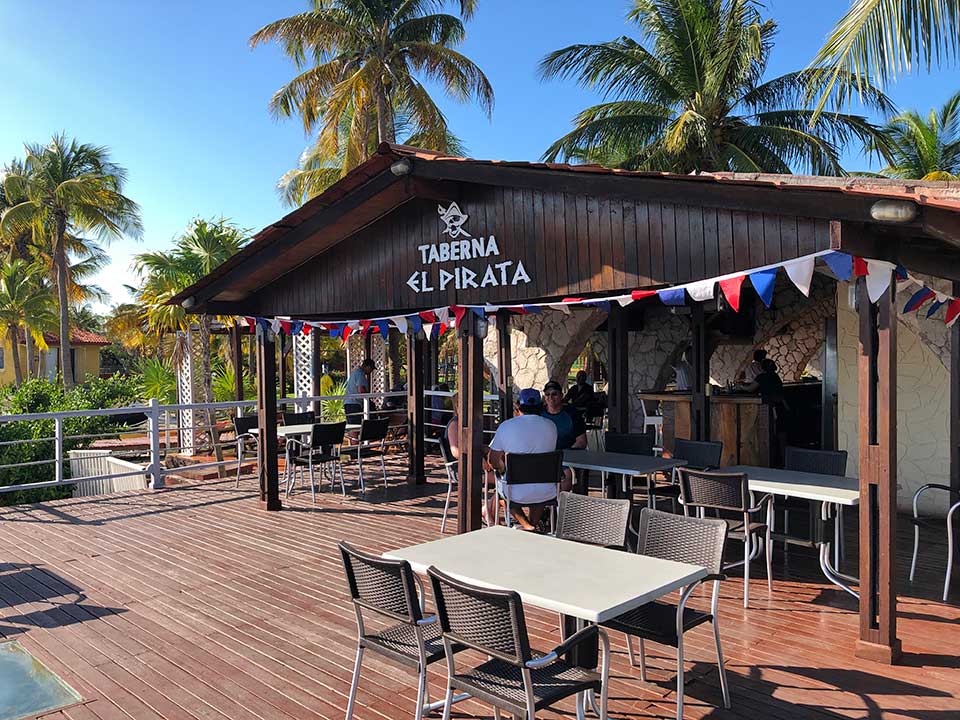
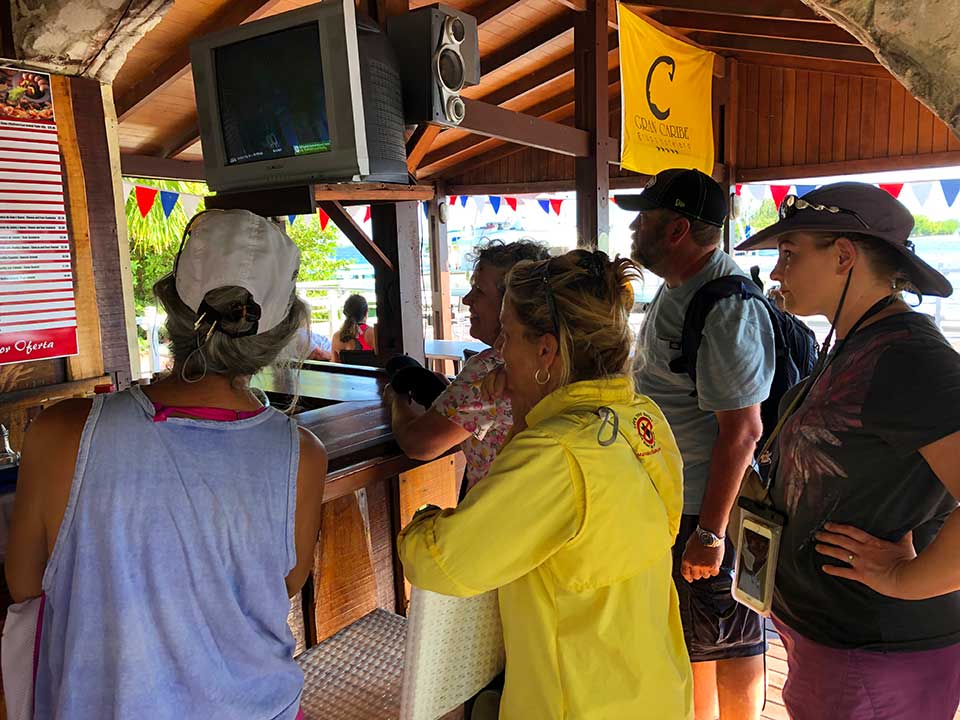
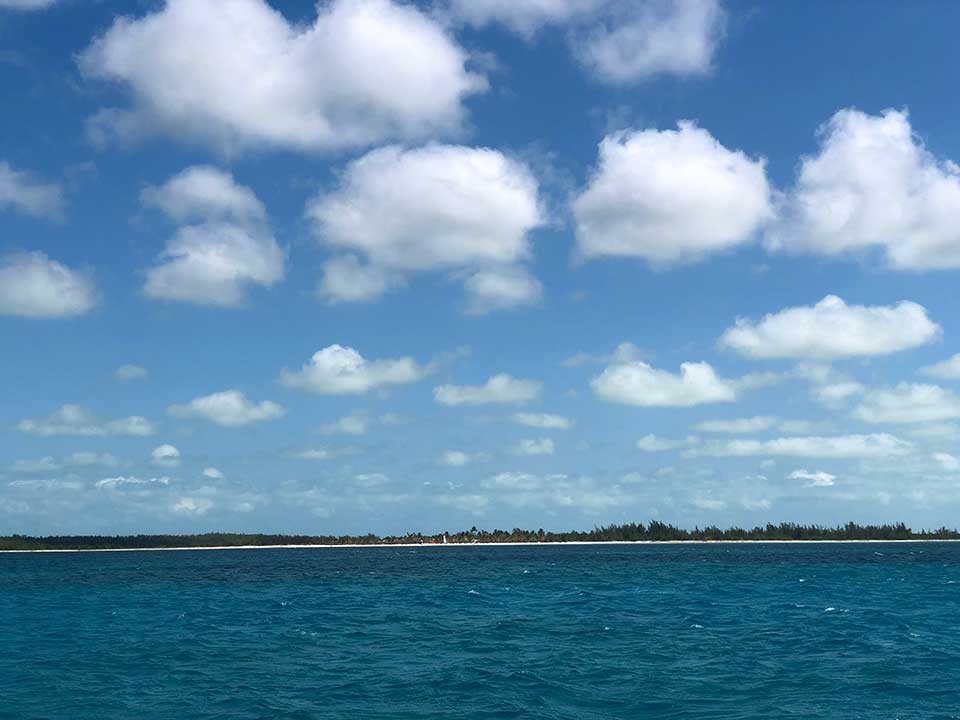
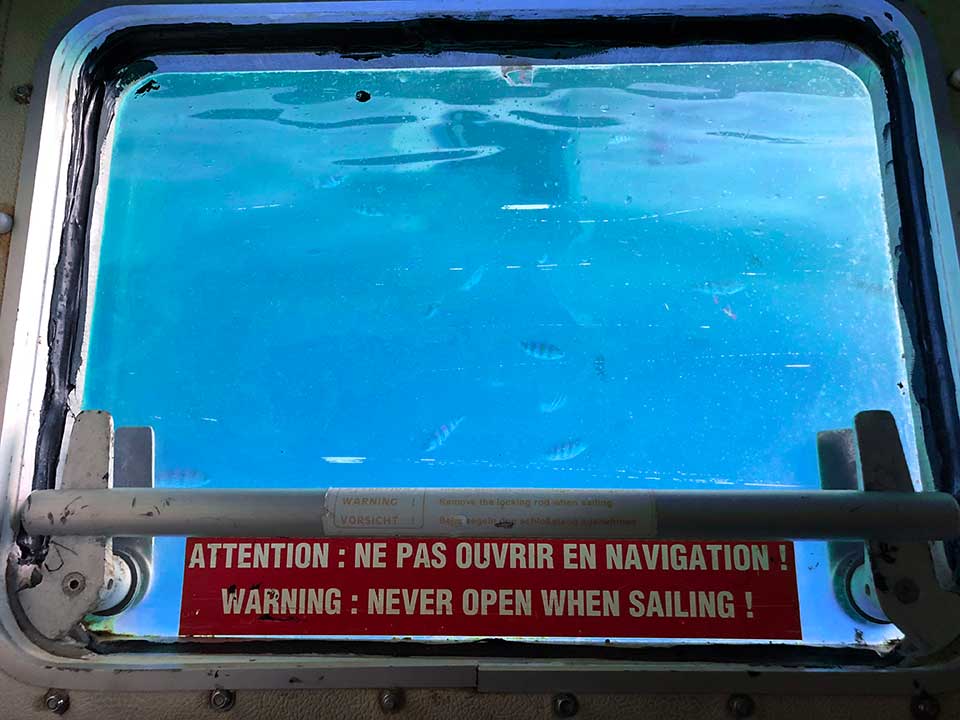
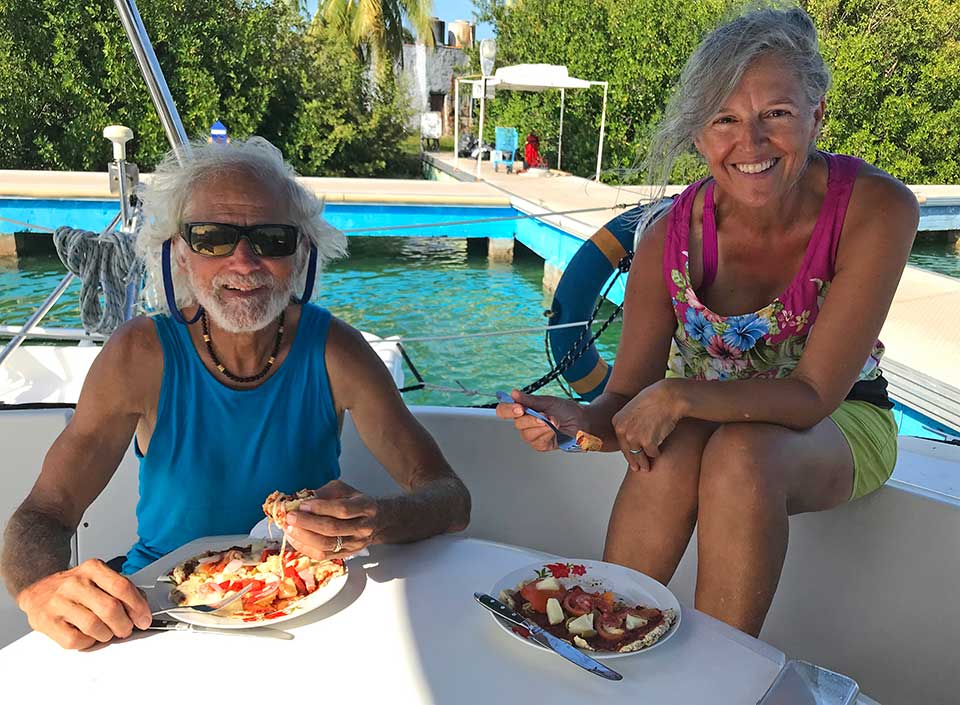
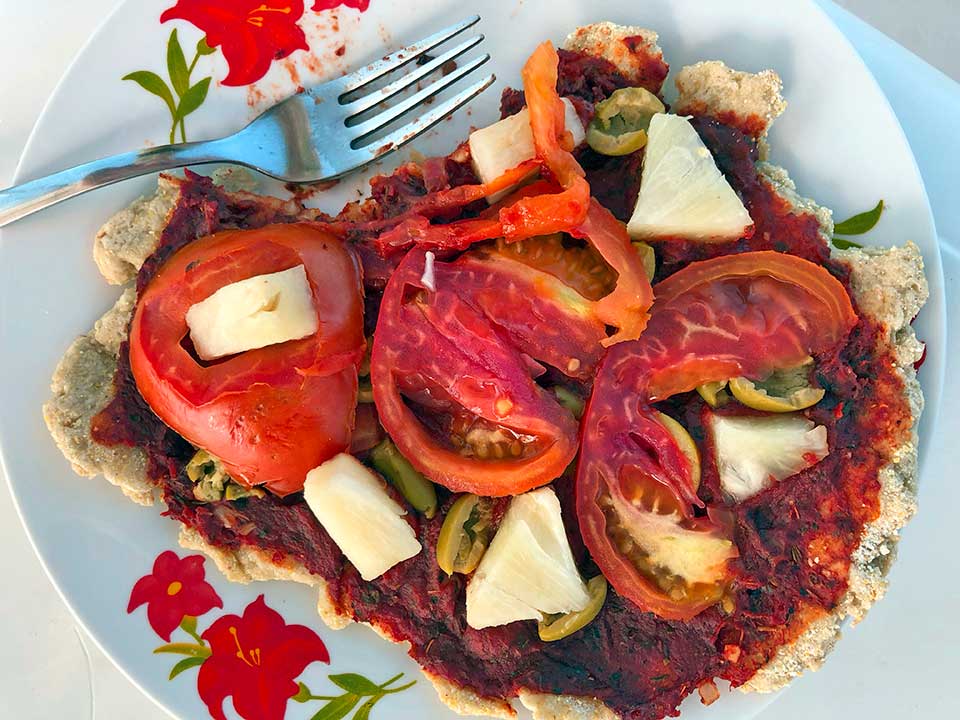
Hi Kirk & Heidi, thank you for the great blog! I enjoyed Teresa & Rob’s presentation at Northwest Multihull Association of your shared trip to Cuba. It was recorded and available to view at https://www.youtube.com/channel/UCNKPNaDN3ZKW_y-wc0bVn2A/